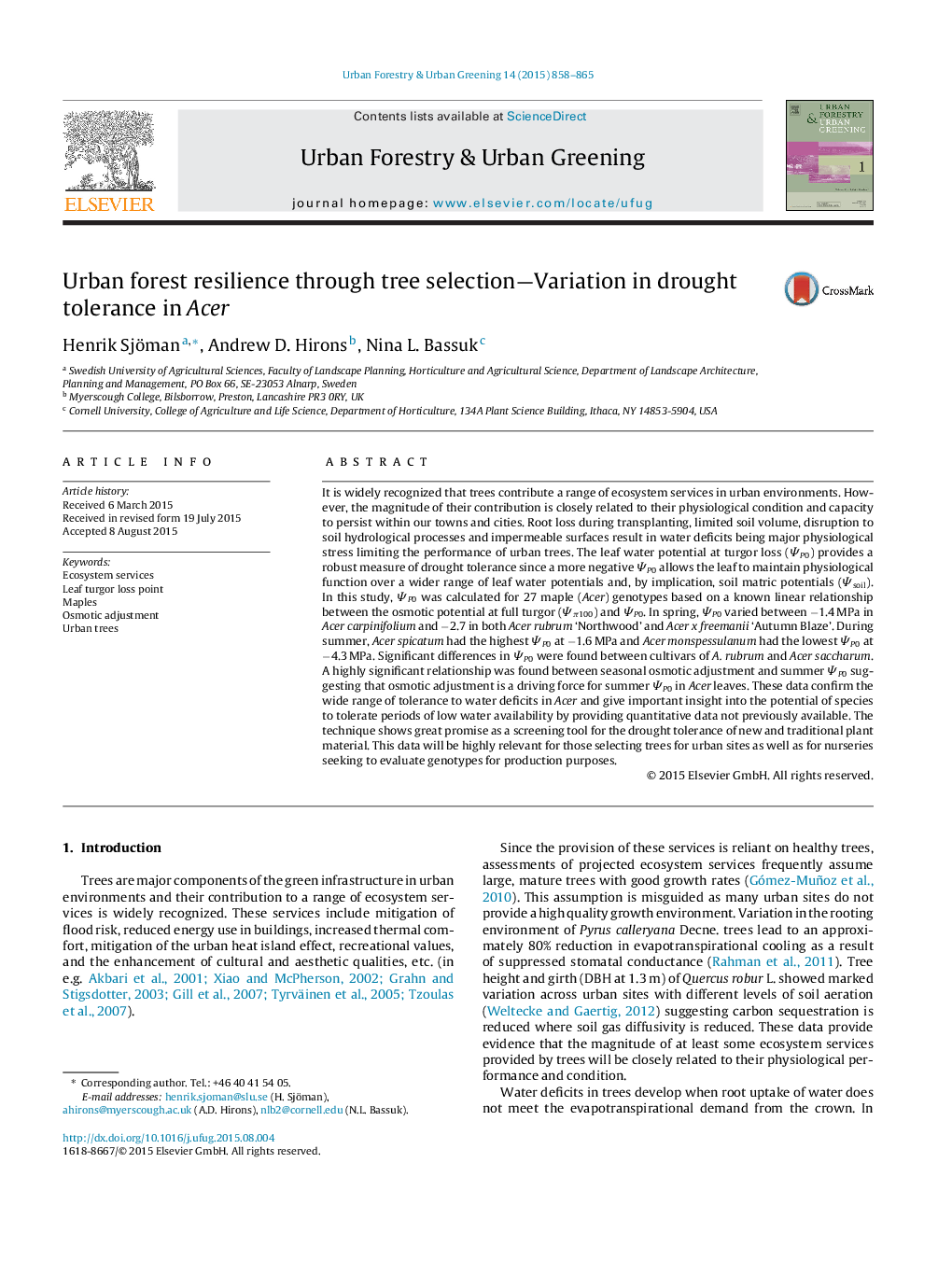| Article ID | Journal | Published Year | Pages | File Type |
|---|---|---|---|---|
| 10252093 | Urban Forestry & Urban Greening | 2015 | 8 Pages |
Abstract
It is widely recognized that trees contribute a range of ecosystem services in urban environments. However, the magnitude of their contribution is closely related to their physiological condition and capacity to persist within our towns and cities. Root loss during transplanting, limited soil volume, disruption to soil hydrological processes and impermeable surfaces result in water deficits being major physiological stress limiting the performance of urban trees. The leaf water potential at turgor loss (ΨP0) provides a robust measure of drought tolerance since a more negative ΨP0 allows the leaf to maintain physiological function over a wider range of leaf water potentials and, by implication, soil matric potentials (Ψsoil). In this study, ΨP0 was calculated for 27 maple (Acer) genotypes based on a known linear relationship between the osmotic potential at full turgor (ΨÏ100) and ΨP0. In spring, ΨP0 varied between â1.4 MPa in Acer carpinifolium and â2.7 in both Acer rubrum 'Northwood' and Acer x freemanii 'Autumn Blaze'. During summer, Acer spicatum had the highest ΨP0 at â1.6 MPa and Acer monspessulanum had the lowest ΨP0 at â4.3 MPa. Significant differences in ΨP0 were found between cultivars of A. rubrum and Acer saccharum. A highly significant relationship was found between seasonal osmotic adjustment and summer ΨP0 suggesting that osmotic adjustment is a driving force for summer ΨP0 in Acer leaves. These data confirm the wide range of tolerance to water deficits in Acer and give important insight into the potential of species to tolerate periods of low water availability by providing quantitative data not previously available. The technique shows great promise as a screening tool for the drought tolerance of new and traditional plant material. This data will be highly relevant for those selecting trees for urban sites as well as for nurseries seeking to evaluate genotypes for production purposes.
Related Topics
Life Sciences
Agricultural and Biological Sciences
Forestry
Authors
Henrik Sjöman, Andrew D. Hirons, Nina L. Bassuk,
